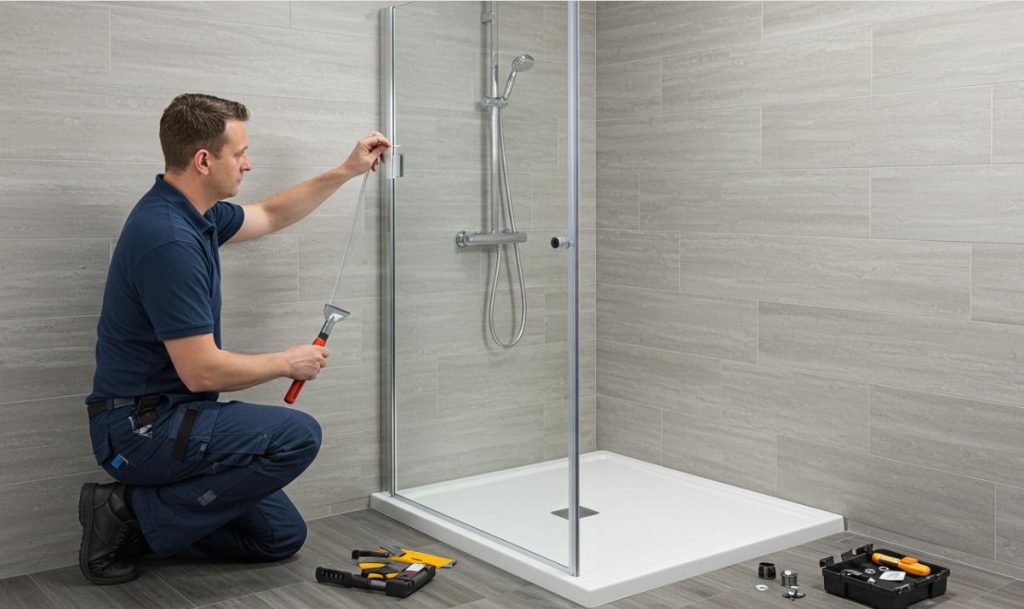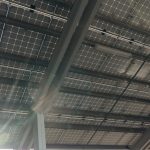Planning a shower enclosure installation involves more than choosing elegant tiles or chic glass panels. It demands precise preparation, focusing on waterproofing and structural integrity. Neglecting these foundational elements can lead to costly failures and poor living conditions. Careful attention to proper installation techniques from the start ensures a safe, resilient, and stylish bathroom.
Understanding Waterproofing Essentials for Your Shower Area
Discovering water leaks or moisture accumulation in a supposedly secure area is frustrating. For your shower enclosure, avoiding such issues relies on meticulous waterproofing strategies.
Selecting the Right Waterproof Membrane
Waterproof membranes are your primary defense against moisture intrusion. Options include liquid-applied and sheet membranes, each with unique benefits for specific applications. Liquid membranes offer seamless coverage, ideal for irregular spaces or intricate corners. Sheet membranes generally allow faster installation, ensuring consistent thickness over larger areas. Selecting the right membrane prevents leaks, preserves home value, and avoids unnecessary repair costs.
Ensuring Proper Drainage
Successful waterproofing also depends on effective drainage. A proper slope towards the shower drain ensures efficient water removal, preventing pooling and moisture damage. Best construction practices recommend a slope of 1.5% to 2% for adequate water flow. High-quality sealants cannot compensate for poor drainage design; this detail is crucial.
Structural Requirements for a Durable Shower Enclosure
Waterproofing alone is insufficient; structural integrity is equally vital for your shower enclosure. Careful consideration of support, framework, and materials determines the enclosure’s longevity and functionality.
Assessing Subfloor Stability
An uneven or unstable subfloor creates a poor foundation for any bathroom project. Before installation, thoroughly inspect and correct any subfloor weaknesses or irregularities. Reinforcing or leveling the foundation ensures your shower enclosure remains solid, sturdy, and safe. Neglecting this can lead to cracks, leaks, or structural issues, costing more than initial prevention.

Framing and Support Structures
Like a house, your shower enclosure needs robust framing and supports. Wood or metal studs provide reinforcement, ensuring the enclosure withstands daily use. Proper alignment and secure fastening of these elements offer stability and durability. Consult experts or follow construction regulations to ensure framing meets current safety standards.
Common Mistakes to Avoid During Installation
Even experienced installers can overlook details during shower enclosure installation. Here’s a quick reference to avoid common pitfalls:
| Installation Step | Common Mistake | Recommended Solution |
| Waterproofing Membrane | Uneven application | Apply membrane uniformly, following manufacturer’s instructions. |
| Drain Placement | Incorrect slope | Maintain a 1.5%–2% slope for efficient drainage. |
| Subfloor Preparation | Skipping stabilization | Level and reinforce the subfloor before installing shower base. |
| Framing Installation | Weak supports | Use strong wood or metal supports, securely attached to studs. |
| Sealant Usage | Wrong or low-quality sealants | Use industry-standard waterproof silicone sealants. |
Enhancing Shower Enclosure Safety and Comfort
Beyond basic waterproofing and structural needs, enhancing safety and comfort during installation can significantly transform your bathroom.
Non-Slip Flooring Choices
Prioritize safety by choosing slip-resistant materials to prevent accidents. Textured tiles or non-slip coatings increase friction, providing secure footing on wet surfaces.
Ventilation and Moisture Control
Proper ventilation effectively manages bathroom moisture, reducing mold growth and odors. Exhaust fans or venting systems rapidly dissipate humidity, ensuring healthier indoor air quality. Consider incorporating important moisture management practices, such as the effective strategies for humidity control.
Additional Useful Resources
For further insights into your shower enclosure installation, detailed articles on :
For further considerations on your shower enclosure installation, these detailed articles provide valuable insights:
A successful shower enclosure relies on diligent waterproofing and structural measures. Key elements include selecting the right membrane, ensuring proper drainage, stabilizing the subfloor, and using solid framing. These steps prevent long-term damage and create a secure, appealing bathroom. Partnering with professionals, like NVA Glass & Mirror, saves time and minimizes errors. For expert installation and a shower designed for lasting performance, contact our experienced team today.

